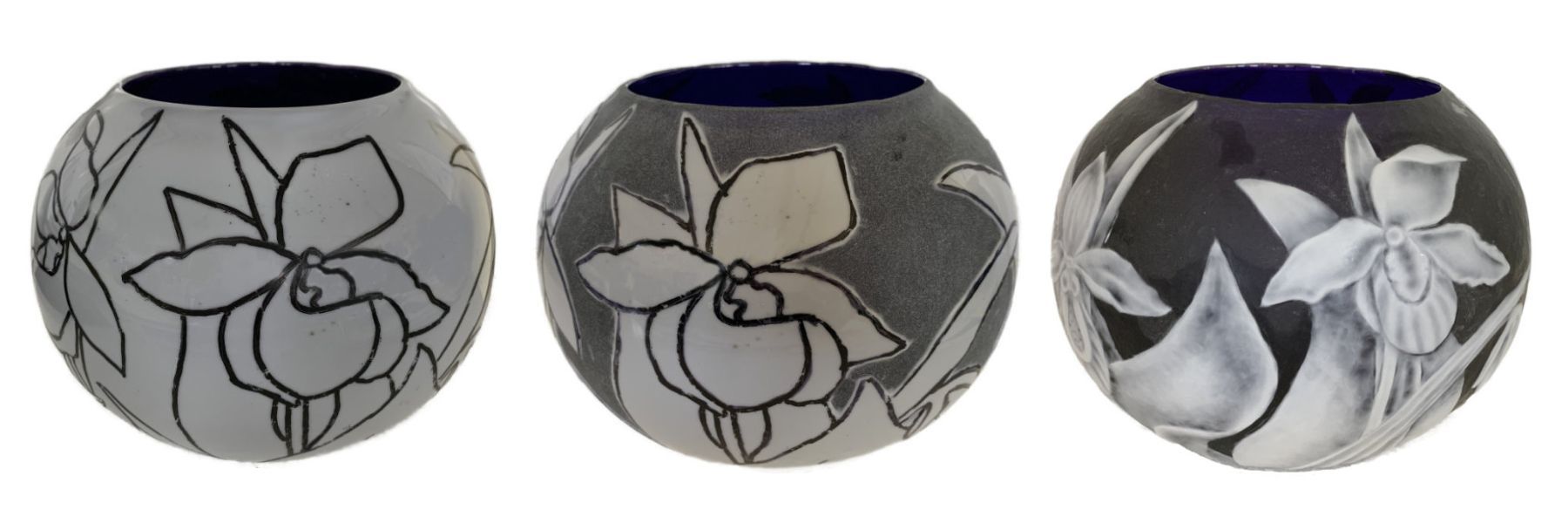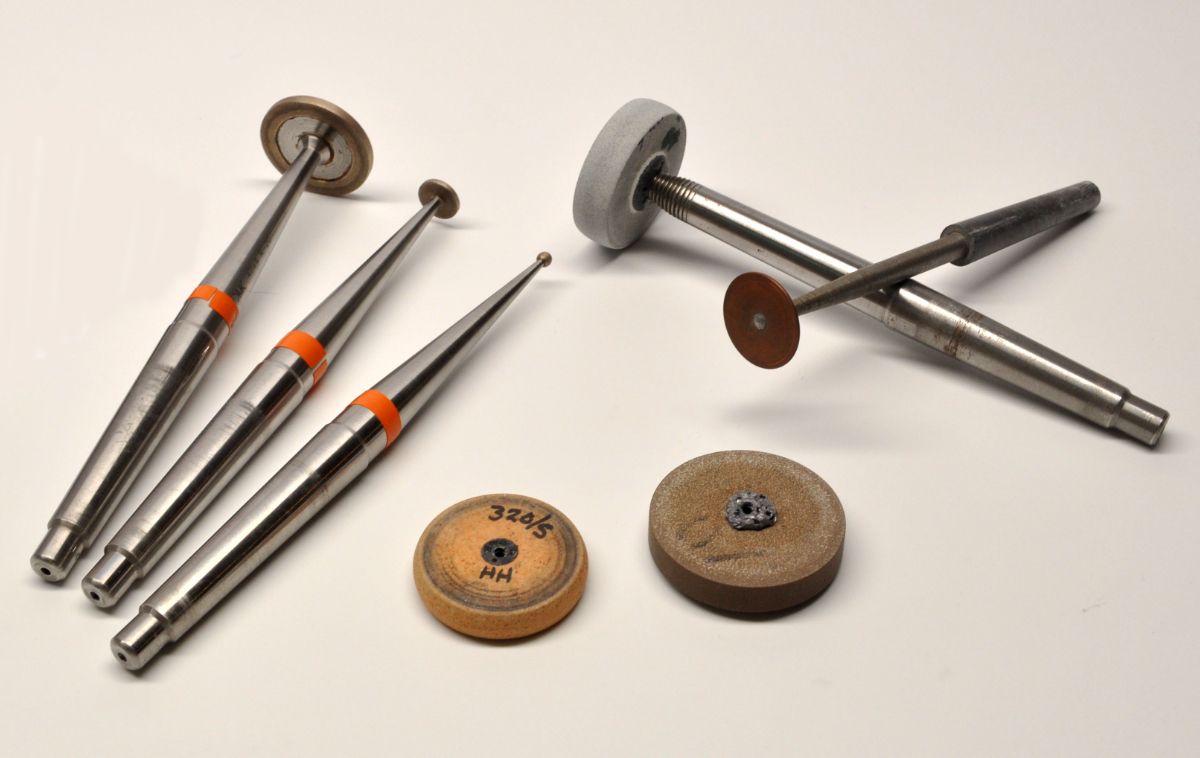ARTIST

PROCESS
An artist has many choices to consider on how best to express themselves in engraved glass. The design, glass, tools and technique all impact how the work will be perceived. Every artwork displayed in the portfolio required an intense process during which all these considerations were weighed. Some pieces were engraved on blanks created in the kiln, other blanks were blown by a talented gaffer, and another engraved on thinly layered hand blown sheet glass. A blank is what the glass object is called before the engraving process begins.
A cameo blank is created with one or more thin layers of color glass over a thicker base of color or clear glass. The artist engraves through a color layer, exposing some of the color below to develop the design. A relatable example would be your grandmother’s cameo brooch. Transparent color or clear glass blanks are engraved, either lightly to create a surface decoration, or deeper to give the illusion of volume in the design. Again, a relatable example would be a cut crystal wine glass. With a design and glass chosen, the artist then works to aesthetically arrange and engrave the design on the glass.
WHEEL ENGRAVING
Wheel engraving involves the use of many types of wheels, each attached to a spindle which is then rotated in a lathe. The glass is moved against the rotating wheel to create the design as glass is removed. Copper wheels are the traditional tool and engraving with them requires the most time, however the reward is a beautiful, silky smooth cut surface. A slurry of oil and grit applied to the copper wheel is what actually cuts the glass. Stone wheels are manufactured now by bonding grit into a matrix, and cut faster, but not quite as smoothly as copper. The grits used for both types of wheels are comparable to what is used to make sandpaper and available in similar grades or sizes. Copper and stone wheels are shaped by the artist to suit the need and both require a bit of maintenance to keep them cutting properly.

TOOLS
Diamond wheels are the latest on the scene. Diamonds of a uniform size are imbedded in hard metal, which is then cast to a specific size and shape. Once a diamond wheel has been made, it should retain its shape even as it gets smaller with use, requiring very little maintenance. These wheels cut the fastest and will leave a surface ranging from very scratchy to smooth, depending on the size of the diamonds. The artist may choose to use all three types of wheels to complete an engraved artwork.
Engraving is indeed a thoughtful process with many hours spent moving the glass against the wheel. It is also very intimate, meditative, and rewarding to watch the design come to life in your hands.



